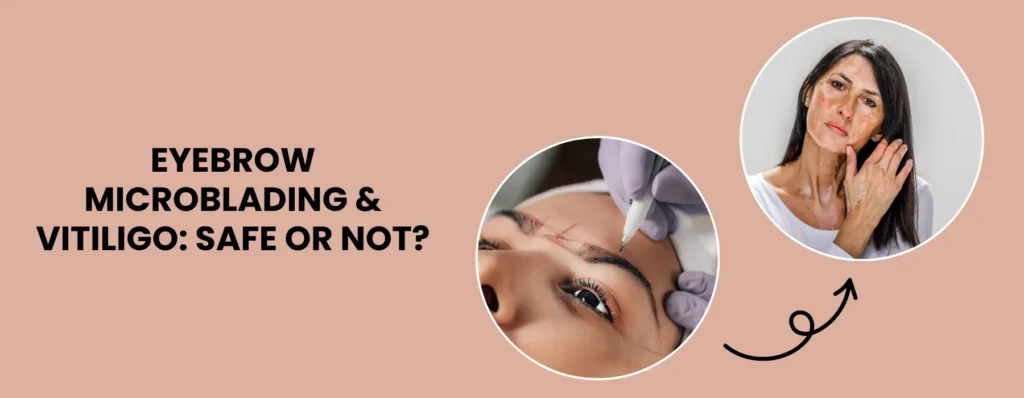Eyebrows frame the face, convey emotion, and draw attention to the eyes. But what happens when vitiligo—an autoimmune condition that causes skin depigmentation—affects your brows? Many individuals explore eyebrow microblading for people with vitiligo as a solution. Yet questions linger: Is it safe?
Will pigment hold on depigmented skin? How do you prevent complications? This article answers these questions, busts myths, and offers expert insight so you can decide with confidence.
Vitiligo occurs when melanocytes (pigment‑producing cells) are destroyed, leaving patches of milky‑white skin. When depigmentation appears in brow areas, the contrast between brow hair and pale skin can be stark. Pencil fillers or powders help, but smudge and fade throughout the day—especially in humid climates like India.
Microblading is a form of semi‑permanent cosmetic tattooing. The Specialist use a handheld blade with fine needles to deposit pigment in hair‑like strokes, mimicking natural brow hairs. Results last 12–24 months, fading gradually.
Unlike traditional tattoos that penetrate deeper, microblading pigments sit in the upper dermis, allowing natural exfoliation and colour evolution without turning blue or green.

Colour Camouflage: Evens out contrast between brow hairs and depigmented skin.
Shape Restoration: Fills gaps where hair has thinned or stopped growing.
Confidence Boost: Eliminates daily brow makeup routines, offering smudge‑proof results.
Dermatologists caution that any trauma to vitiligo‑affected skin can trigger the Koebner phenomenon (new lesions forming at the injury site). Microblading involves controlled skin trauma, so risk exists. However, several studies and anecdotal evidence show many vitiligo clients have successfully undergone microblading without spreading lesions.
Active Vitiligo: Rapidly spreading patches or new lesions in the past 6 months increase risk.
Stable Vitiligo: No new spots for a year reduces risk; considered safer for microblading.
To ensure safety and quality:
Depigmented skin lacks melanin, so pigments appear brighter. Using a warmer, slightly deeper shade prevents ashy or washed‑out healed results. Many artists custom blend pigments with a warm undertone (yellow, orange) for natural brow tones on vitiligo skin.
At Eyebrows Lips & Scalp Clinic, we understand the challenges of microblading in vitiligo conditions and customize your care accordingly. Our experts offer detailed consultations to assess your skin type, lifestyle, and weather-related concerns.
We use top-quality pigments that hold better in humid climates and follow stringent hygiene protocols to prevent infection. Our clients receive personalized aftercare kits and real-time support throughout the healing process.
Whether it’s your first session or a seasonal touch-up, trust our experienced team for the best microblading results in any season.
Eyebrow microblading for people with vitiligo can be safe and effective — provided your condition is stable, you work with an experienced artist, and follow strict aftercare. With the right precautions, microblading can camouflage depigmentation, restore symmetry, and boost confidence without triggering new patches.
If you’re considering the procedure, consult a dermatologist first, then choose a clinic experienced in melanin‑rich and vitiligo‑affected skin. Eyebrows Lips & Scalp Clinic in Pune offers complimentary consultations to answer all questions.
Ready to redefine your brows? Book a consultation today and take the first step toward even, natural‑looking eyebrows — no daily makeup required.
WhatsApp us